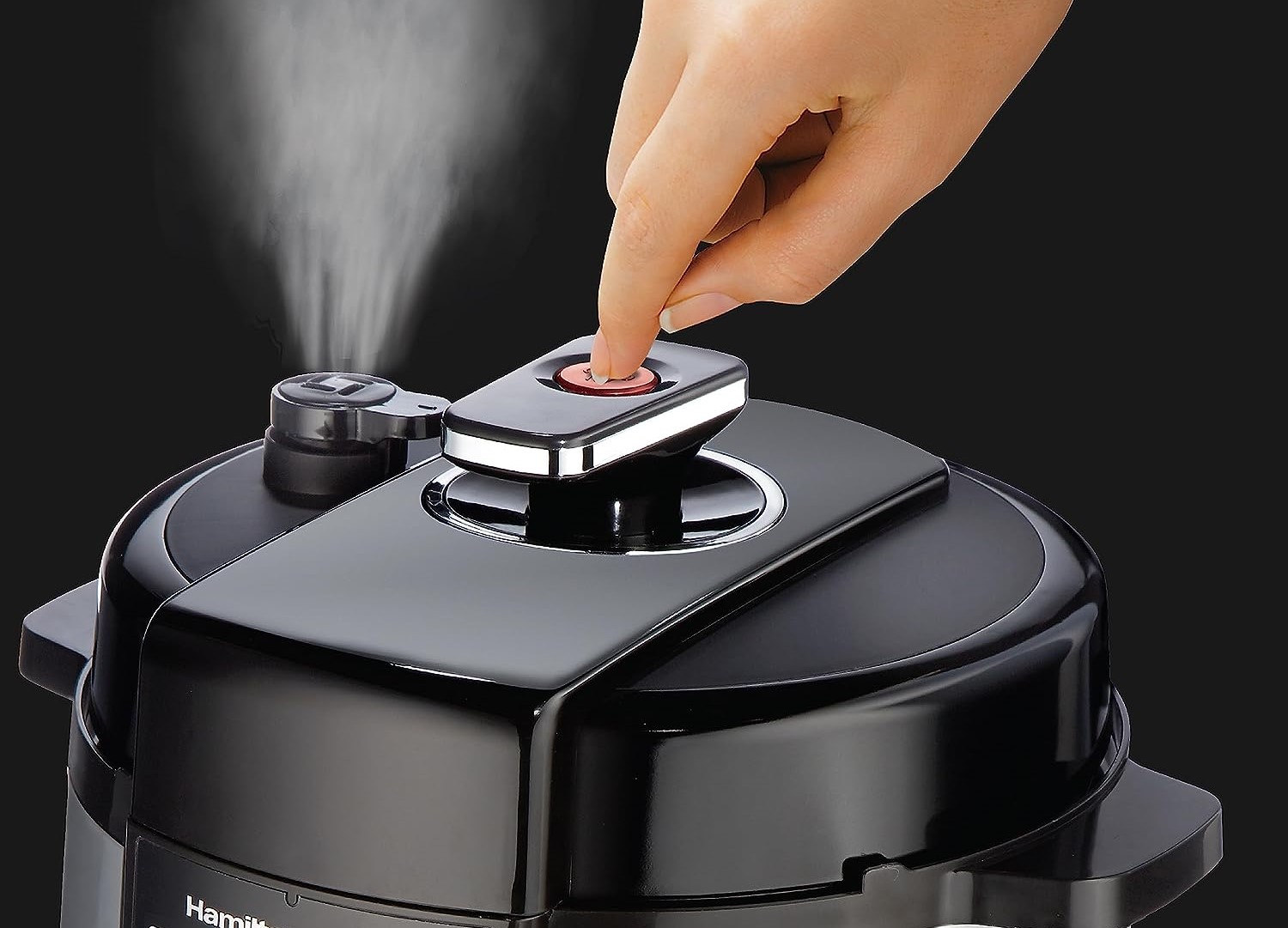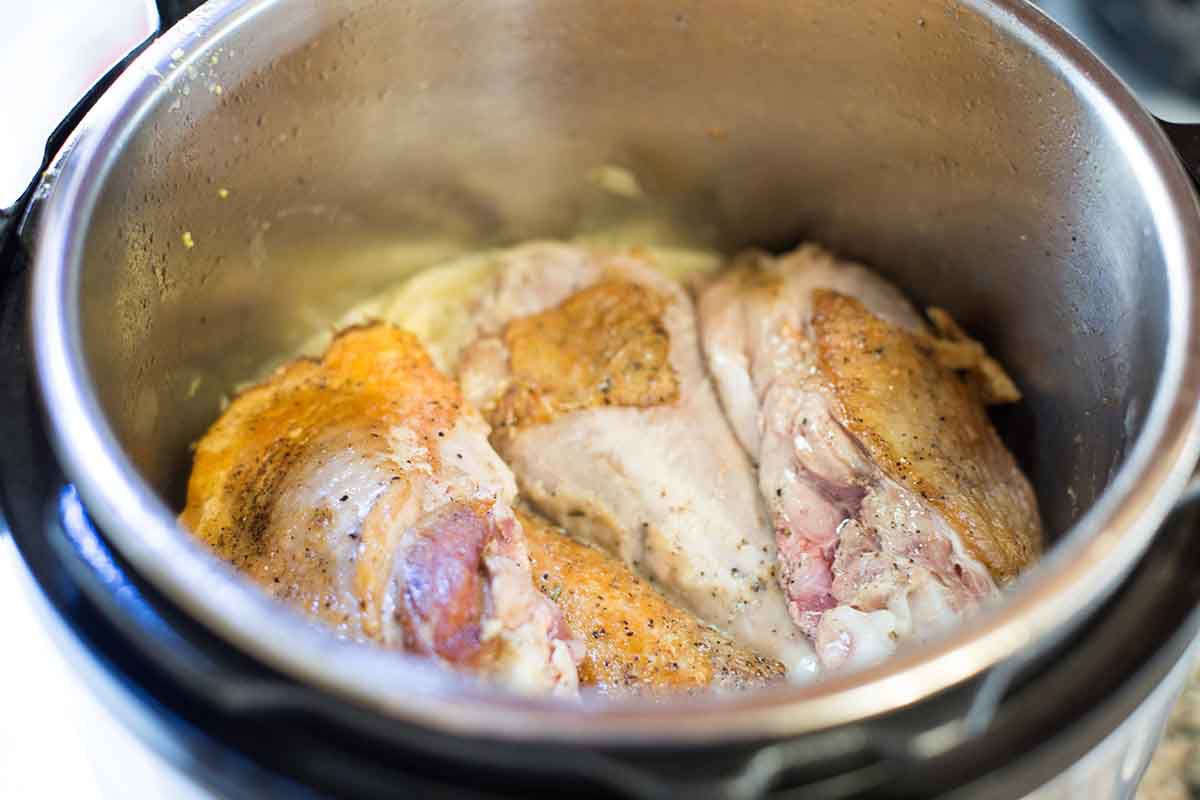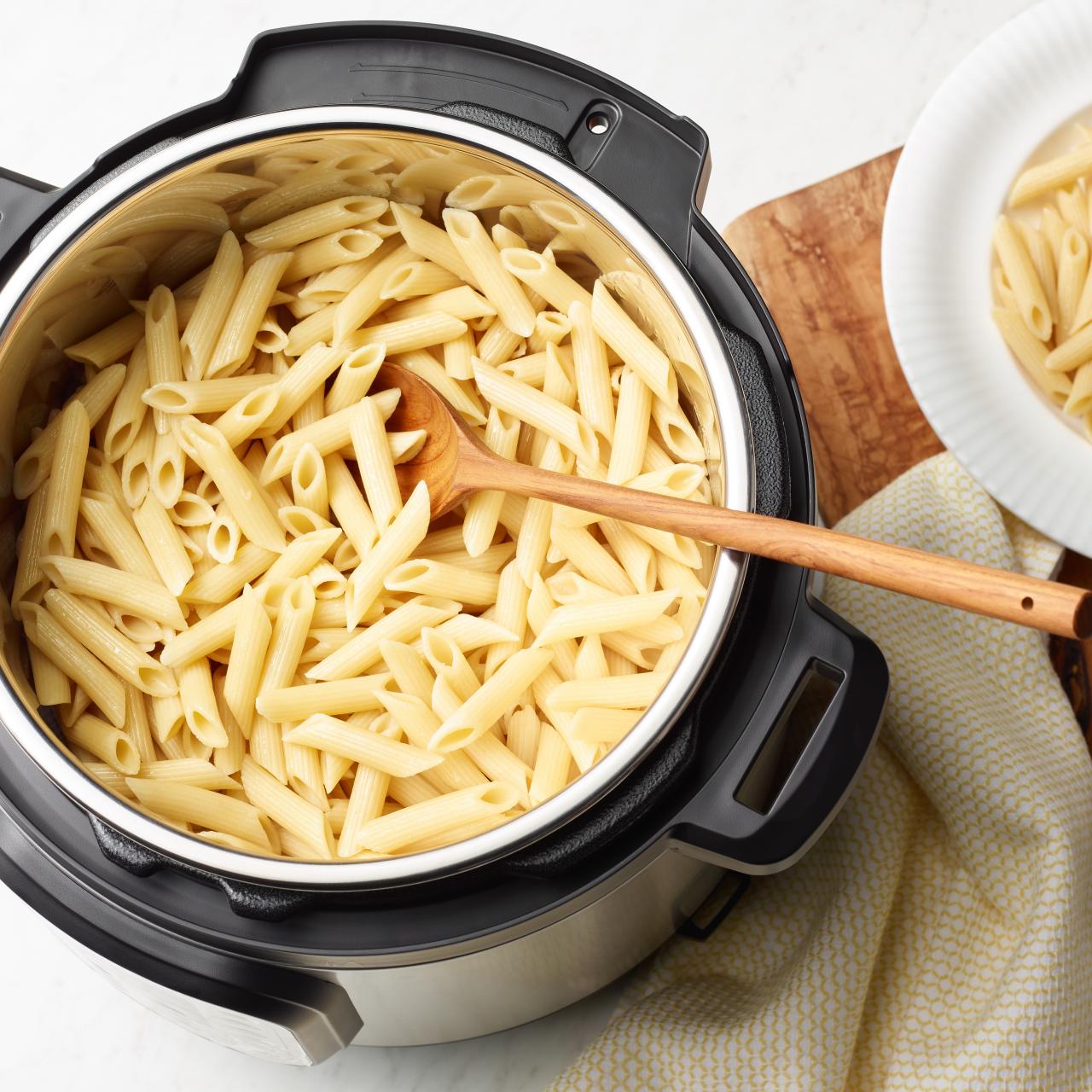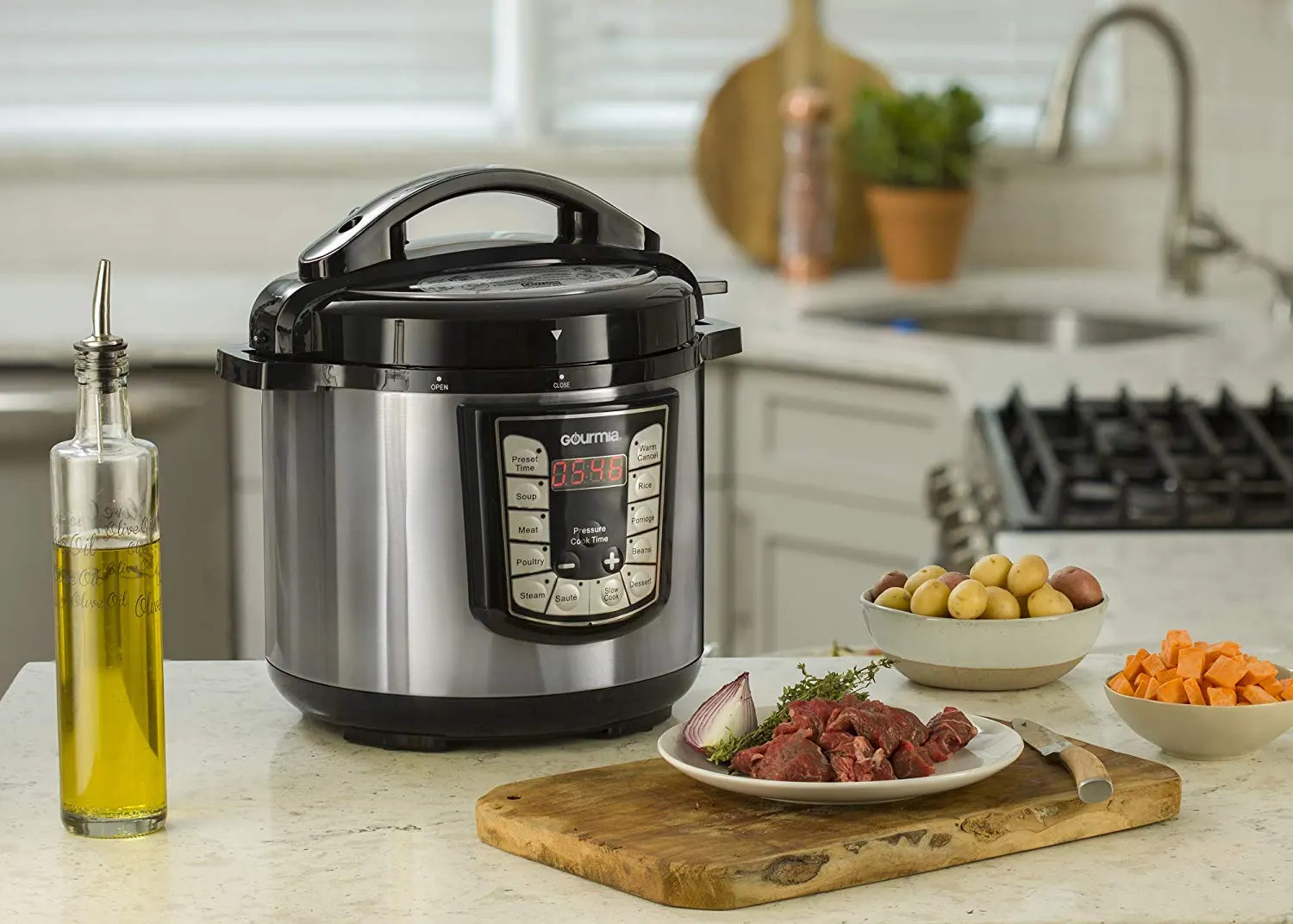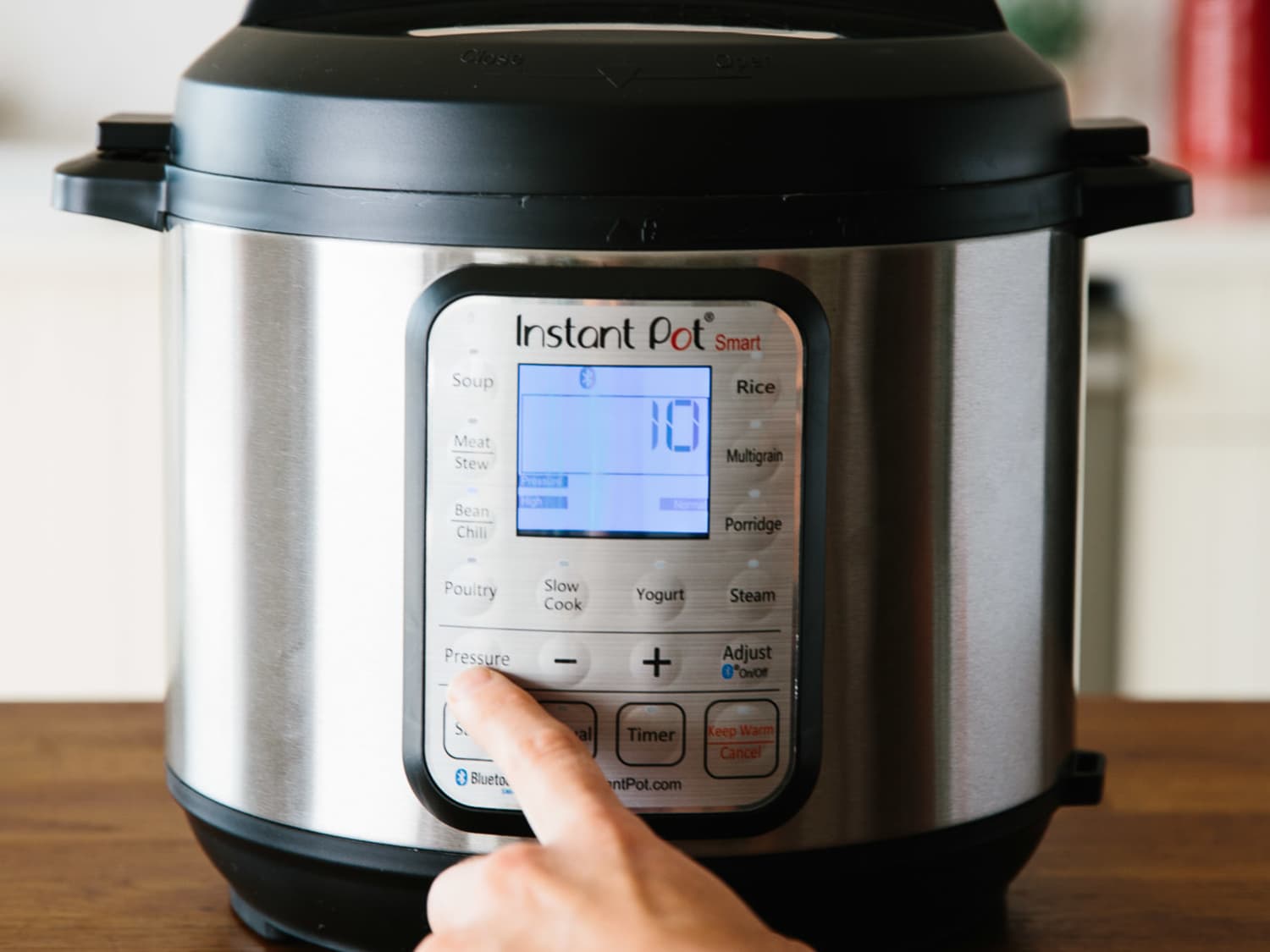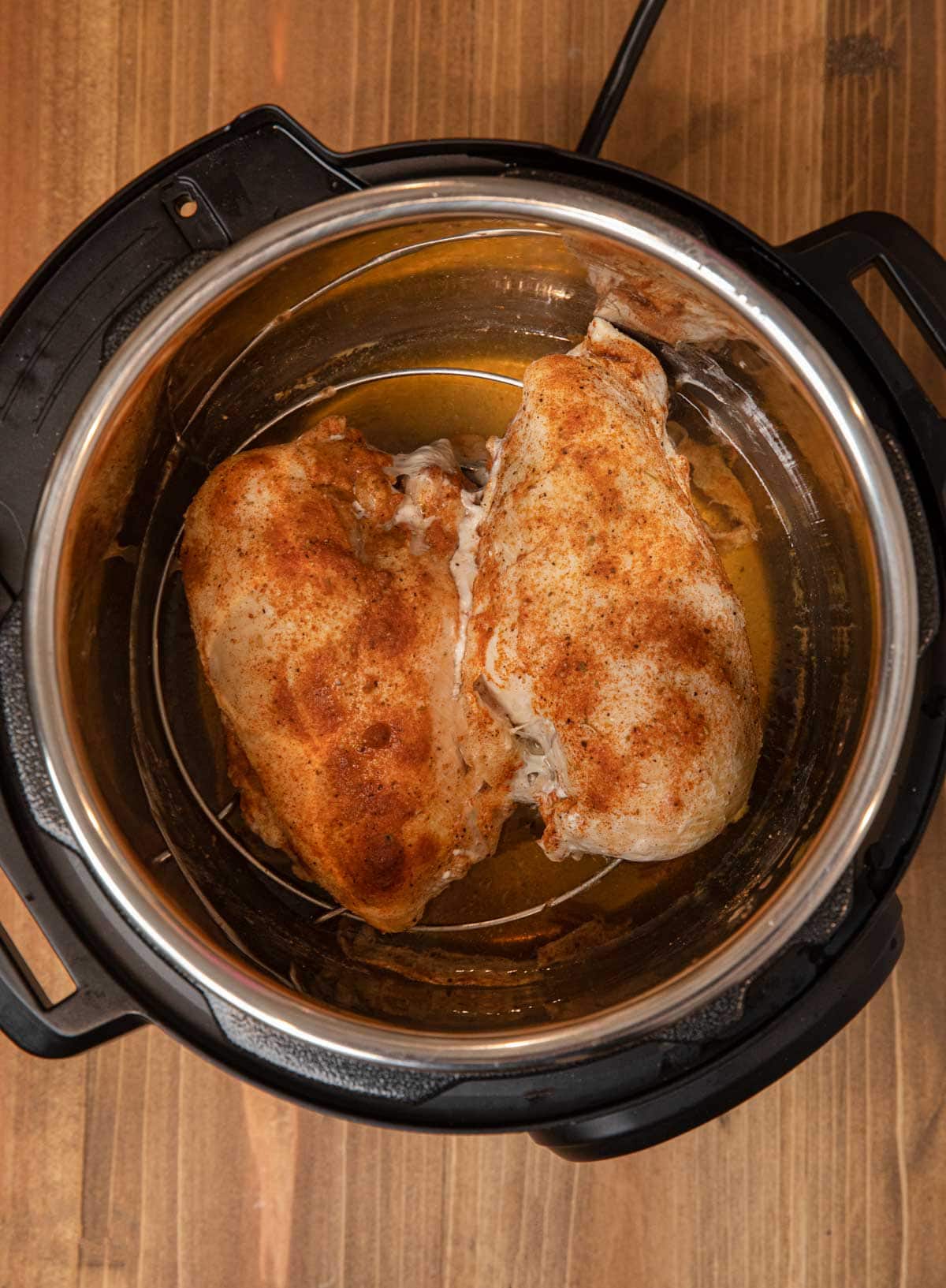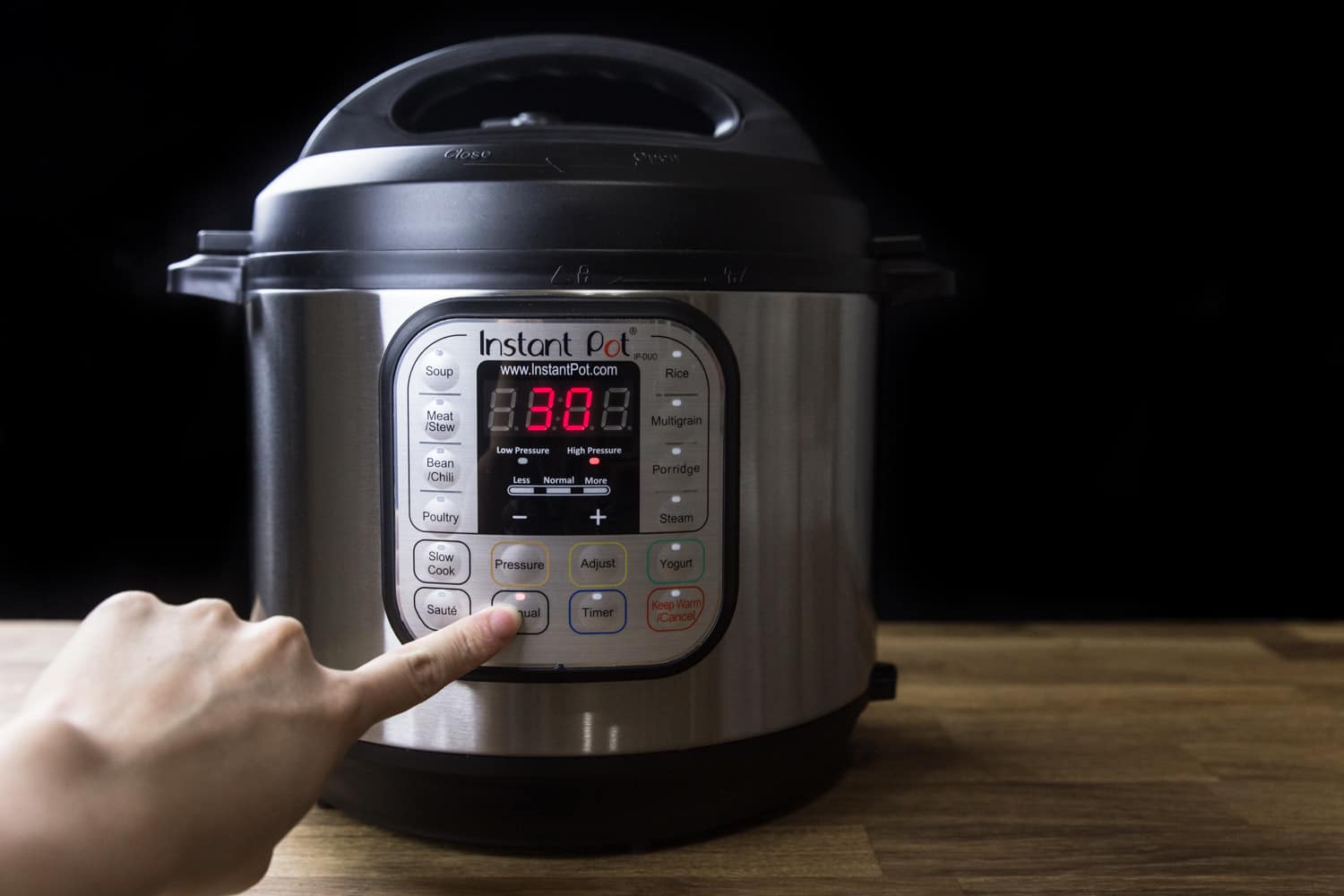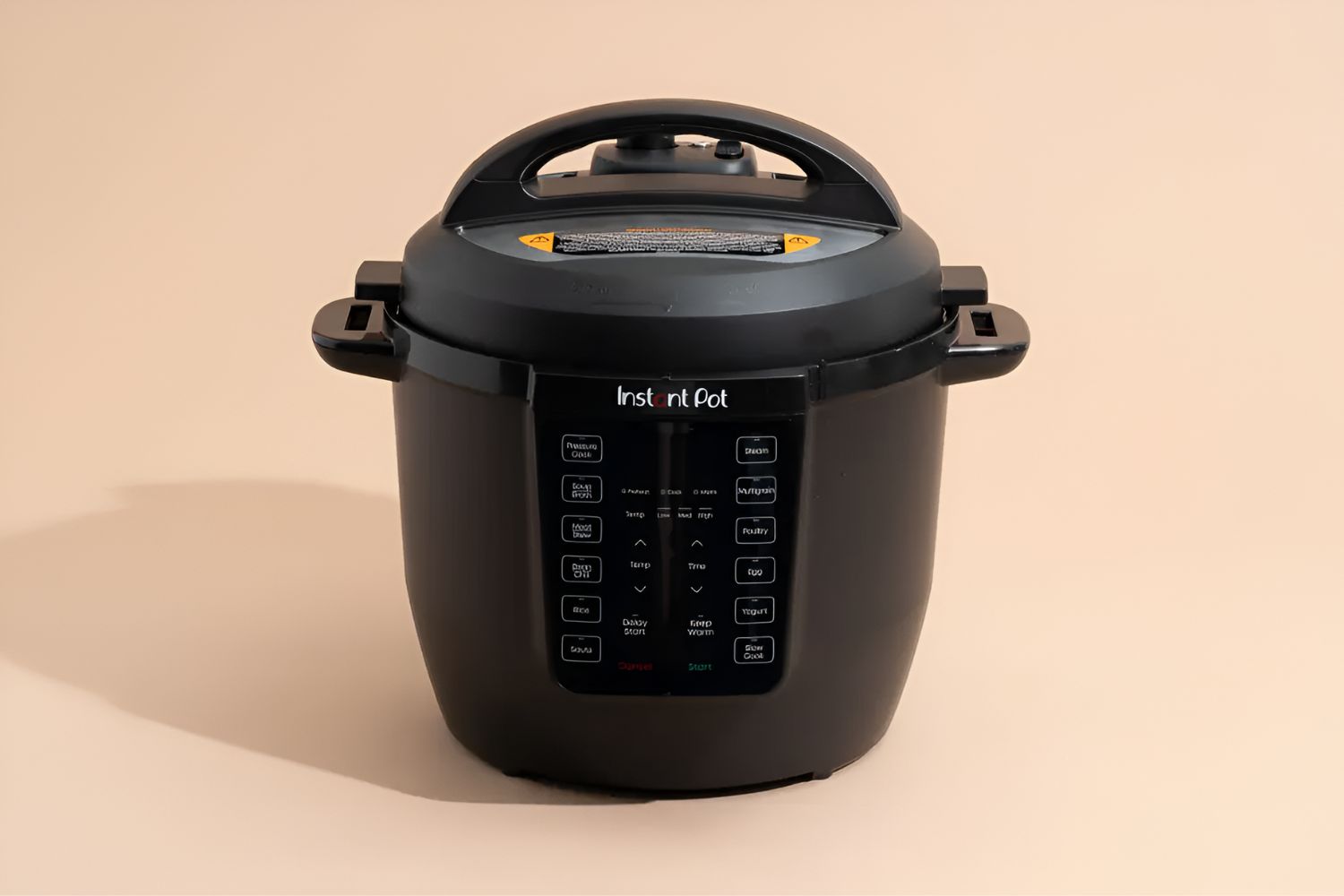Introduction
Welcome to our guide on how to release pressure from an electric pressure cooker! Electric pressure cookers have become an increasingly popular kitchen appliance due to their ability to cook food quickly and efficiently. However, one aspect that can cause anxiety for many users is the process of releasing pressure safely. In this article, we will walk you through the different methods of pressure release for electric pressure cookers.
Understanding how to release pressure correctly is crucial to avoid accidents and injuries. The pressure built up inside the cooker during the cooking process needs to be released gradually and safely. Failure to do so can result in food splattering or even the risk of the lid getting stuck and being difficult to open.
There are several methods for releasing pressure from an electric pressure cooker, including the quick release, natural release, and cold water release methods. Each method is suited for different types of recipes and cooking requirements. By following the appropriate pressure release method, you can ensure that your food is cooked to perfection and the process is safe and hassle-free.
Throughout this guide, we will provide step-by-step instructions for each pressure release method, along with essential tips and precautions to keep in mind. Whether you’re a beginner or an experienced cook, understanding how to release pressure from an electric pressure cooker is a valuable skill that will help you confidently prepare delicious meals for yourself and your loved ones.
So, let’s dive in and learn about the different pressure release methods for electric pressure cookers and how to perform them correctly and safely!
Understanding the Pressure Release Methods
Before we delve into the step-by-step guide for releasing pressure from an electric pressure cooker, let’s take a moment to understand the different methods available. Each method serves a specific purpose and is suited for different cooking scenarios.
1. Quick Release Method: The quick release method involves manually releasing the pressure from the pressure cooker immediately after cooking. This method is ideal for recipes that require the food to retain its texture and consistency, such as vegetables or pasta. To perform a quick release, you simply need to move the pressure release valve from the sealing to the venting position, allowing the steam to escape quickly.
2. Natural Release Method: The natural release method involves letting the pressure decrease naturally over time without any intervention. This method is recommended for dishes that require longer cooking times or for delicate foods that may become overcooked under the high pressure of a quick release. To perform a natural release, you need to turn off the heat and allow the pressure cooker to sit undisturbed until the pressure indicator drops, indicating that the pressure is fully released.
3. Cold Water Release Method: The cold water release method is used in situations where there is a need to rapidly release pressure from the cooker. This method is typically employed when cooking time is critical or in cases of emergencies. To perform a cold water release, you need to carefully move the pressure cooker to the sink and run cold water over the lid to cool it down. The sudden change in temperature causes the pressure to drop rapidly, allowing for a quick release of pressure.
It’s important to note that the method you choose will depend on the recipe you’re cooking and the desired outcome. Always refer to the recipe instructions or the manufacturer’s guidelines for the recommended pressure release method.
Understanding these pressure release methods will enable you to choose the most appropriate method for your specific cooking needs. In the following section, we will provide detailed step-by-step instructions for each method to ensure a smooth and safe pressure release process.
Step-by-Step Guide to Releasing Pressure from an Electric Pressure Cooker
Now that we have a good understanding of the different pressure release methods, let’s dive into the step-by-step guide for releasing pressure from an electric pressure cooker:
1. Quick Release Method:
- Ensure that the pressure cooker is placed on a stable surface away from any heat-sensitive items or walls.
- Carefully move the pressure release valve from the sealing to the venting position. Be cautious as hot steam will rapidly escape from the valve.
- Allow the steam to fully release until the pressure indicator drops, indicating that the pressure has been released.
- Once the pressure has been fully released, you can safely open the pressure cooker.
2. Natural Release Method:
- After cooking, turn off the heat and leave the pressure cooker undisturbed.
- Allow the pressure to decrease naturally over time. The pressure indicator will drop when the pressure has been fully released.
- Once the pressure indicator drops, it is safe to open the pressure cooker lid.
3. Cold Water Release Method:
- Carefully move the pressure cooker to the sink.
- Run cold water over the lid of the pressure cooker. Be sure to keep the water away from the pressure release valve.
- The sudden change in temperature will cause the pressure to drop rapidly.
- Once the pressure indicator drops, indicating that the pressure has been fully released, you can safely open the pressure cooker.
It is important to note that the cooking time and recipe instructions may vary depending on the specific electric pressure cooker model you are using. Always refer to the manufacturer’s guidelines and recipe instructions for the recommended pressure release method and timing.
By following these step-by-step instructions, you can safely and effectively release pressure from your electric pressure cooker, ensuring a smooth and hassle-free cooking experience. Now, let’s move on to some essential tips and precautions to keep in mind when releasing pressure from an electric pressure cooker.
Quick Release Method
The quick release method is a popular pressure release technique used to rapidly release the pressure from an electric pressure cooker. This method is suitable for recipes that require food to retain its texture and consistency. Here’s a step-by-step guide on how to perform the quick release method:
- Ensure that the pressure cooker is placed on a stable surface, away from any heat-sensitive items or walls.
- Once the cooking time is complete, turn off the heat source or press the cancel button on your electric pressure cooker.
- Using a long-handled utensil, carefully move the pressure release valve from the “sealing” to the “venting” position. Make sure to protect your hands from the hot steam.
- As you move the valve, you will hear a hissing sound as the steam starts to escape from the pressure cooker. This is normal and indicates that the pressure is being released.
- Allow the steam to escape fully until the pressure indicator drops. The pressure indicator is a small metal rod or pin that pops up when the cooker is under pressure, and it drops back down when the pressure is fully released.
- Once the pressure indicator has dropped, it is safe to open the pressure cooker lid.
It’s important to exercise caution when performing a quick release. Keep your face and hands away from the steam and ensure that the steam is released in a clear, open area. Do not attempt to force open the lid until the pressure indicator has dropped completely, as this indicates that the pressure is fully released.
Remember, the quick release method is ideal for recipes that require immediate cooling or for when you need to stop the cooking process quickly. It is not recommended for recipes containing starchy or thick liquids, which have a higher chance of splattering during quick release.
By following these step-by-step instructions and practicing caution, you can successfully utilize the quick release method to safely release pressure from your electric pressure cooker.
Natural Release Method
The natural release method is a passive pressure release technique that allows the pressure inside the electric pressure cooker to decrease naturally over time. This method is recommended for recipes that require longer cooking times or delicate foods that may become overcooked under the high pressure of a quick release. Here’s a step-by-step guide on how to perform the natural release method:
- After the cooking cycle is complete, turn off the heat source or press the cancel button on your electric pressure cooker, but do not move the pressure release valve.
- Leave the pressure cooker undisturbed and allow it to sit for a designated period, as specified in the recipe or in the manufacturer’s instructions. The natural release time can vary depending on the amount of pressure built up inside the cooker and the type of ingredients being cooked.
- During the natural release, the pressure inside the cooker gradually decreases on its own. You will notice the pressure indicator dropping, indicating that the pressure is being released.
- Once the pressure indicator has completely dropped, it is safe to open the pressure cooker lid.
It’s important to note that the natural release method can take longer than the quick release method. The actual release time depends on the amount of pressure built up inside the cooker and can range from a few minutes to 30 minutes or more. Patience is key during this process to ensure that the pressure is fully released.
The natural release method is especially beneficial for dishes that contain delicate ingredients, such as seafood or custards, as it allows the dish to gently continue cooking in residual heat without being subjected to a rapid drop in pressure. This helps maintain the texture, tenderness, and flavors of the food.
Keep in mind that some recipes may require a combination of both the natural release and quick release methods. In such cases, follow the recipe instructions to ensure the best cooking results.
By following these steps and allowing the pressure to decrease naturally, you can safely and effectively utilize the natural release method with your electric pressure cooker.
Cold Water Release Method
The cold water release method is a technique used to rapidly release the pressure from an electric pressure cooker. This method is particularly useful in situations where there is a need to quickly release the pressure, such as in cooking time-sensitive recipes or during emergencies. Here’s a step-by-step guide on how to perform the cold water release method:
- After the cooking time is complete, turn off the heat source or press the cancel button on your electric pressure cooker.
- Carefully move the pressure cooker to the sink, ensuring that it is placed on a stable surface.
- Run cold water over the lid of the pressure cooker. Be cautious not to let the water come into contact with the pressure release valve or any other openings.
- The sudden change in temperature caused by the cold water running over the lid will start to cool down the pressure cooker, resulting in a rapid drop in pressure.
- As the pressure drops, you may hear a clicking or popping sound. This is the indication that the pressure is being released.
- Once the pressure indicator drops completely, it is safe to open the pressure cooker lid.
It’s important to handle the pressure cooker with care when performing a cold water release. Ensure that only the lid comes into contact with the cold water, and avoid splashing water onto yourself or nearby surfaces. The cold water release method should only be used when absolutely necessary, as it can cause thermal shock to the pressure cooker and may affect its long-term durability.
This method is particularly useful in situations where time is of the essence, such as when cooking time-sensitive ingredients like seafood or when needing to stop the cooking process immediately due to an emergency situation.
Remember to always follow the recipe instructions and take necessary precautions when performing a cold water release with your electric pressure cooker. An improper cold water release can result in food undercooking or safety risks, so it’s crucial to exercise caution and follow proper guidelines.
By following these steps and being mindful of safety precautions, you can effectively and safely execute the cold water release method with your electric pressure cooker.
Tips and Precautions for Pressure Release
Releasing pressure from an electric pressure cooker is a critical step in the cooking process, and it’s important to follow these tips and precautions to ensure a safe and successful release:
- Always read the manufacturer’s manual: Before using your electric pressure cooker, familiarize yourself with the specific guidelines and instructions provided by the manufacturer. Different models may have varying pressure release methods and safety features.
- Stay vigilant and attentive: Never leave your pressure cooker unattended while releasing pressure. Keep a close eye on the pressure indicator and be mindful of the release method you’re using.
- Start with caution: When using the quick release method, start with short bursts of steam release to prevent any sudden splattering or boiling liquid shooting out from the pressure release valve. If necessary, wait a few seconds between each burst.
- Use a long-handled utensil: When performing a quick release, use a long-handled utensil, such as tongs or a wooden spoon, to move the pressure release valve. This helps to keep your hands and face away from the steam.
- Avoid overfilling the cooker: To prevent clogging or blockage of the pressure release valve, never fill your pressure cooker beyond the manufacturer’s recommended maximum fill line. Leave enough space for the food and liquid to expand during the cooking process.
- Be patient with natural release: When using the natural release method, be patient and allow the pressure to decrease naturally. Avoid rushing the process by trying to manually release the pressure to prevent potential accidents.
- Clean the pressure release valve: Regularly clean the pressure release valve to ensure it is free from debris or food particles that may hinder proper pressure release. Refer to the manufacturer’s instructions for the correct cleaning method.
- Inspect the seal: Before each use, check the silicone sealing ring on the lid to ensure it is in good condition and properly seated. A damaged or improperly fitted seal may lead to a loss of pressure and hinder the pressure release process.
- Follow recipe instructions: Different recipes may require specific pressure release methods and timings. Always refer to the recipe instructions to ensure the best cooking results.
By following these tips and taking necessary precautions, you can safely release pressure from your electric pressure cooker and enjoy delicious meals with peace of mind.
Conclusion
Releasing pressure from an electric pressure cooker is a crucial step in the cooking process that ensures both safety and optimal cooking results. By understanding the different pressure release methods – the quick release, natural release, and cold water release – you can choose the most appropriate method for your specific recipe and cooking needs.
The quick release method is ideal for recipes that require immediate cooling or when you need to stop the cooking process quickly, while the natural release method is recommended for longer cooking times and delicate ingredients. The cold water release method serves as a rapid pressure release option for time-sensitive recipes.
Throughout this guide, we have provided step-by-step instructions for each pressure release method as well as essential tips and precautions to ensure a safe and successful release. Remember to read the manufacturer’s manual, stay attentive during the release process, and follow recipe instructions for the recommended method.
By following these guidelines, you can confidently release pressure from your electric pressure cooker, allowing you to cook a variety of dishes efficiently and with ease. Whether you’re a beginner or an experienced cook, mastering the art of pressure release is a valuable skill that will enhance your culinary endeavors.
So, go ahead and explore the wide range of recipes you can cook in your electric pressure cooker, knowing that you have the knowledge to safely release pressure and enjoy delectable meals every time.







